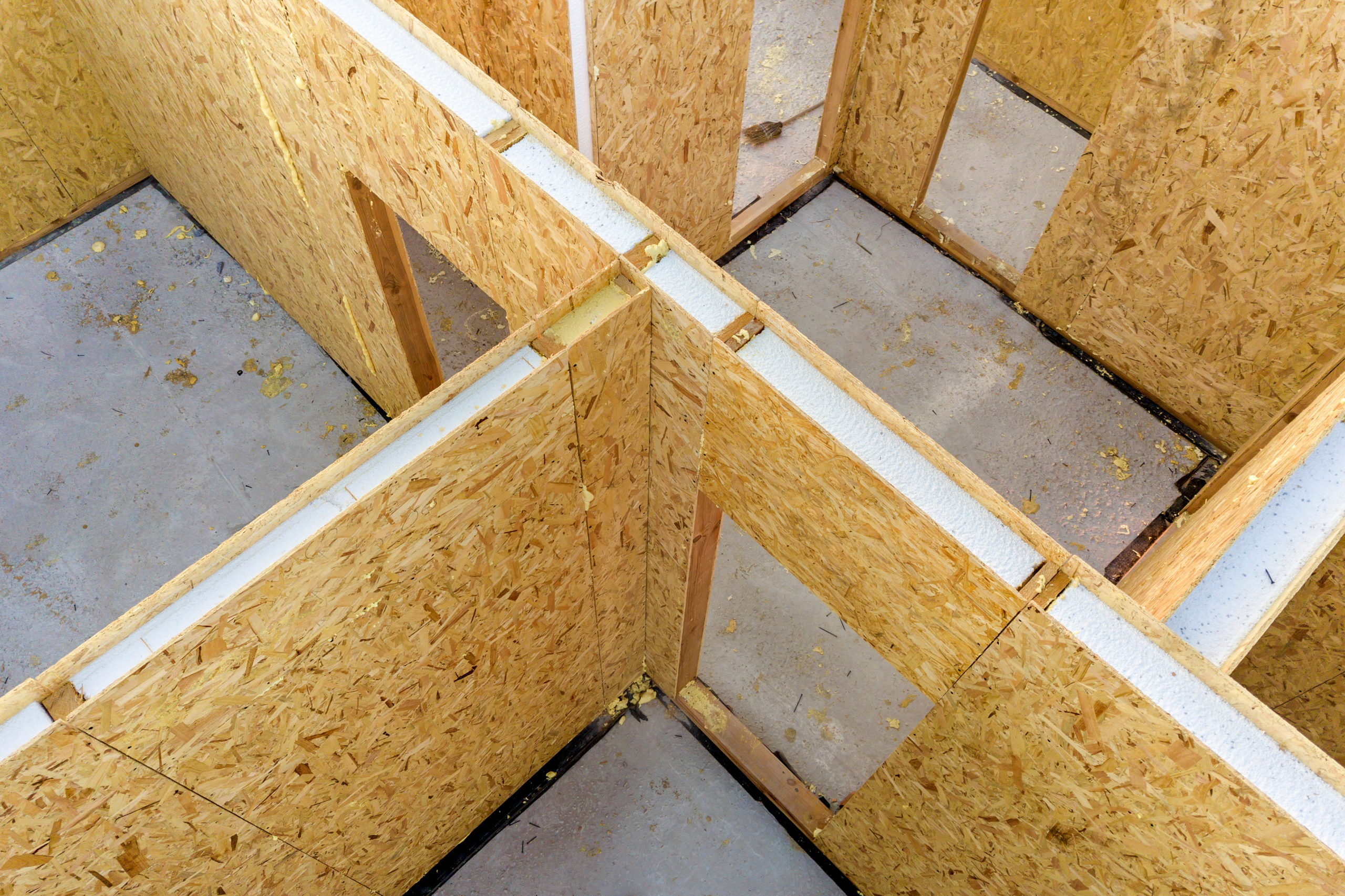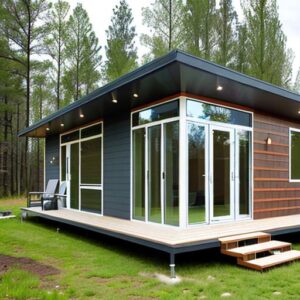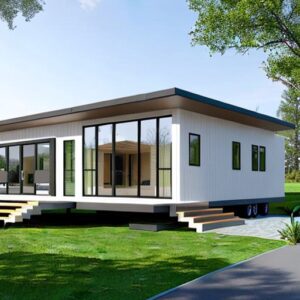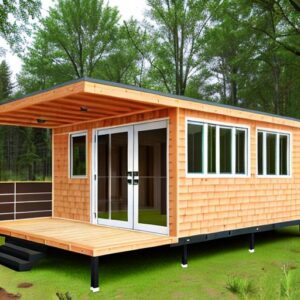There are many advantages to a modular home, as well as some downsides; let’s take a closer look.
How is a Modular Home Different?
Modular homes are prefabricated in a factory, to strict local and state building codes. On completion, the home sections are transported to the construction site to be assembled on the foundations.

What happens after that is very similar to traditional home construction. The utilities need to be connected, appliances fitted, and the finishing touches made to the building.
While some people might have a negative opinion of prefab homes, they really shouldn’t. A modular home constructed 20 or 30 years ago is very different from the manufactured homes of today. The standards of construction are such that they are equal to a traditionally built property.
The Benefits of Building a Modular House
Alongside the varied designs available, choosing a modular home has other advantages is too.
Fast and Efficient Building
With modular homes being constructed in a factory, your building project’s chances of being delayed by adverse weather conditions are severely reduced. It will mean your contractor is spending less time on your building site, which should reduce your overall cost of construction.
Since the homes are constructed in a factory, the whole process is streamlined. The manufacturer will be able to make savings on the materials, as they are buying in larger quantities.
Manufacturing the sections of your home will not be slowed down by the weather, either. All of this should mean that buying a modular home offers more value for money.
High-quality Homes
Thanks to the prefabricated sections being built inside a temperature-controlled factory, there is less chance of any damage being done by changes in the weather or temperature. This should make sure that the walls are straight, fitting together perfectly when the sections are assembled.
The sections of manufactured homes have to be strong when they are built in the factory. Since they have to be transported on a truck and lifted by a crane onto the foundations, they need to be structurally sound. The idea that prefab homes are temporary or fragile isn’t correct.
Energy Efficiency
The construction of modular homes is done more efficiently, but thanks to their high quality, they are more energy-efficient. Thanks to the sections being built in a factory, there is less waste in the construction process.
The standards of homes built in a factory are going to be higher as well, with the construction overseen at every stage to make sure it complies with building codes. It should also mean that the home is built to higher tolerances with less chance of making mistakes.
You can also adapt your modular home design to be even more energy-efficient, with solar panels, batteries, and low-energy light bulbs. Your prefab home can be adapted to your needs and the climate of the area you live in. You won’t need to be scrambling to do other things to lower your energy bill.
Additional Costs With Modular Homes
The purchase price of your home from the manufacturer isn’t the full cost you’ll end up paying. You also need to pay for the foundations, the utilities to be connected, and the home to be finished. You also need to hire contractors to assemble the sections, so while the price from the manufacturer might appear great, it isn’t going to be your total cost.
Purchasing Land
You need to have the land and get a mortgage to construct the home, but not just any land will do. Not all building lots will allow modular homes. Because of how they are constructed, the zoning ordinances may not allow that type of home to be built.
If you find a building plot that you like, you need to ensure that the zoning and HOA rules allow for modular buildings. Some neighborhoods have restrictive covenants in place that prohibit a modular home to be built.
Custom Modular Homes & Prefab Home Builders in Colorado
If the popularity of modular homes hasn’t convinced you, you can visit some model houses around your area or reach out to an expert to help you out. Doing this will help you get a good understanding of what you might need for your house. Rocky Mountain Modular Homes.com can take care of every aspect of your dream modular home for your family to enjoy for decades to come.



